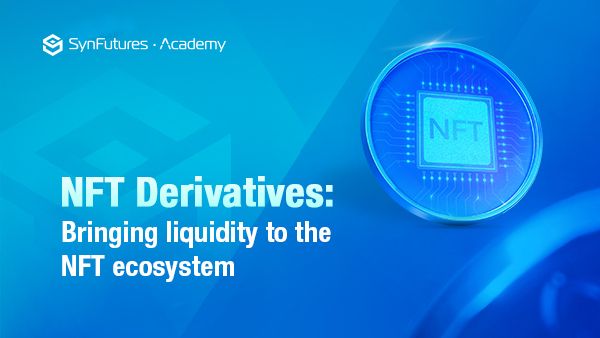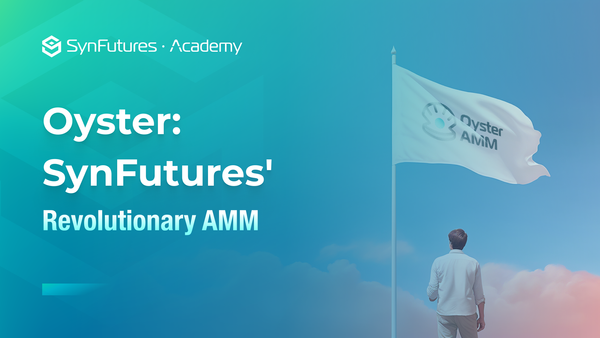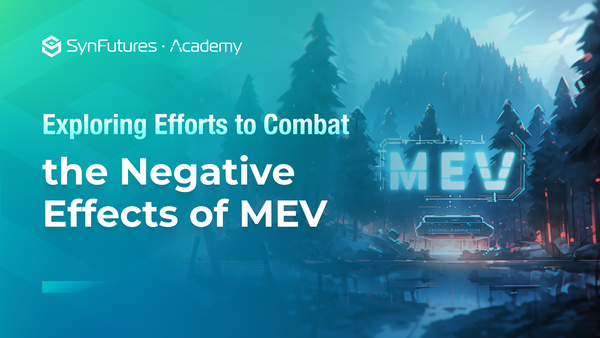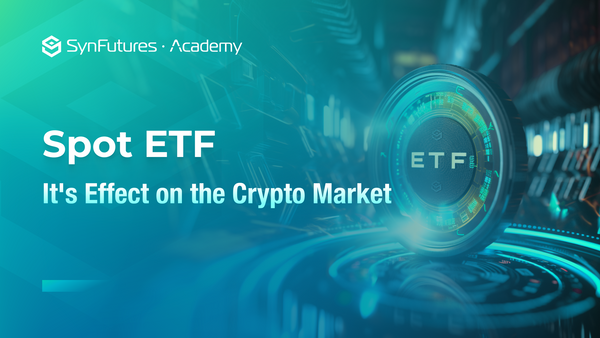NFT Derivatives: Bringing Liquidity to the NFT Ecosystem
What is an NFT?
An NFT or non-fungible token is a unique digital asset class based on blockchain technology. They allow users to claim ownership over digital assets and can be bought, stored, and sold to other users with ease. NFTs use blockchain infrastructure to guarantee a product’s authenticity and enable easy transfer of ownership from one person to another. No two NFTs are the same; each NFT has unique characteristics and therefore has different values and different use cases. Therefore, they are considered non-fungible assets.
Originally, NFTs started out as art tokens but have since branched out into several other fields, including gaming, music, event tickets, and other digital collectible markets. In recent years, several companies have released NFTs, including big names like Adidas, McDonald, Lamborghini, and Coca-Cola. The future of NFTs looks bright, with a recent research report from Technavio predicting the NFT market is likely to grow by $147.24 billion by 2026, with 43% of that growth coming from the APAC region.
Major Hurdles to NFT Growth
While NFTs have exploded in popularity in the past two years, lack of liquidity remains a major constraint in NFT trading. NFTs are highly illiquid assets and selling them quickly at the desired price is difficult. This lack of liquidity has even led to a lot of misconceptions about the value of NFTs in general. Many of us would have seen fear-mongering headlines from the media about how NFTs that sold for millions of dollars are now worth only a few thousand. Here is one such example from Wall Street Journal.
The reason for this misunderstanding comes from the fact that NFTs are highly illiquid. One person might offer to buy an NFT for $2.9 million, and the next best offer might just be for $14,000. So, after the first buyer gets ownership of the NFT, the next best offer would only be for $14,000, and it would look like the NFT has lost 99.5% of its value. If NFTs are to gain mainstream adoption, it is vital to infuse more liquidity into the ecosystem so that such situations can be avoided.
Low liquidity occurs because of the enormous price tag associated with some NFTs. Fewer people are willing to invest large amounts of money in a new asset class like NFTs, and this directly contributes to a low liquidity environment. The only way to address this issue is to bring down the entry cost of owning an NFT. An innovation called a fractional NFT is meant to do exactly that.
Fractional NFTs
A fractional NFT is a derivative product that, as the name suggests, represents a small portion of the original NFT. It allows users to own a piece of the NFT and still benefit from its increasing price without having to invest a large sum of money. For example, a user can take an NFT worth 42 ETH and create 42 ERC-20 tokens to represent it. Each of those tokens will now be worth 1/42 value of the original NFT and, therefore, would be worth 1 ETH each. Since all the ERC-20 tokens represent the same percentage of the NFT, they are also fungible, which means they can be easily traded on regular exchanges.
Fractional NFTs also allow users to diversify their portfolios. Instead of investing a lot of money in a single NFT, investors can now own a fraction of multiple NFTs and thereby hedge themselves from volatile price movements that can occur on any one NFT.
NFT Futures
By improving liquidity, fractional NFTs have also paved the way for the creation of other NFT derivatives products like NFT Futures. NFT Futures can now be created using fractional tokens as the underlying assets as these tokens represent the value of the original NFT but also have good liquidity.
A futures contract allows users to bet on the future price of the underlying asset without purchasing or selling the asset itself. So NFT Futures will allow users to speculate on what the price of a particular NFT will be in the coming days and months.
SynFutures plans to offer its own NFT Futures trading product called NFTures on mainnet soon. NFTures will be a permissionless NFT Futures product that will be based on the price of fractionalized NFT tokens. The permissionless nature of SynFutures makes it an ideal platform for trading long-tail assets like NFT derivatives. Learn more about NFTures on the SynFutures blog.
Advantages of NFT Futures
The traditional stock market matured once stock derivatives were introduced. Similarly, crypto derivatives are playing an important role in improving the overall crypto market. With NFTs, we can expect a similar result where the introduction of derivatives will help bring more stability to the ecosystem.
Like with any other futures products, NFT Futures will give users several advantages over trading NFTs or NFT fractional tokens. Some of those are:
Ability to Short: Currently, there is no mechanism for users to short an NFT. Even if most people believe an NFT is overvalued, there is little they can do to benefit from such overvaluation. However, once NFT Futures enters the market, users will be able to take short positions on an over-valued NFT’s futures contract and close that position after the price comes down. This will allow smart traders to make money during both the bull market and the bear market.
Ability to Hedge Positions: NFT hodlers can also hedge their positions by selling NFT futures that they hold. Futures also allows users to adjust their hedging position because they are based on the price of fractional NFT tokens. Hodlers can increase or decrease the number of shorts they hold depending on the level of hedging they deem necessary.
Leverage: Like any other Futures contract, NFT Futures will also come with leverage options. Traders will be able to take leveraged bets on the future price of the NFT, which could net them far higher profits than the spot market. However, please note that leverage trading is not without its risks.
Conclusion
NFTs have truly established themselves as an important part of the crypto and blockchain ecosystem. With several multi-national companies launching their own NFTs, we can say their mass market adoption has surpassed cryptocurrency adoption.
Such a vibrant field will naturally bring more trading and investment opportunities to the cryptocurrency ecosystem. NFT futures and fractional tokens are just the first of the many interesting new financial products we can expect to see in the future. Interesting times are ahead for the NFT ecosystem, and NFT derivatives are likely to play a key role in that.
Investing in NFTs? Get early access to NFTures, the world’s first derivatives product that enables users to take long or short positions in individual NFTs like CryptoPunks, Art Blocks, and Bored Ape Yacht Club, or a basket of NFTs comprised of multiple assets.
Disclaimer: SynFutures Academy does not guarantee the reliability of the site content and shall not be held liable for any errors, omissions, or inaccuracies. The opinions and views expressed in any SynFutures Academy article are solely those of the author(s) and do not reflect the opinions of SynFutures. The SynFutures Academy articles are for educational purposes or information only. SynFutures Academy has no relationship to the projects mentioned in the articles, and there is no endorsement for these projects. The information provided on the site does not constitute an endorsement of any of the products and services discussed or investment, financial, or trading advice. A qualified professional should be consulted prior to making financial decisions.




